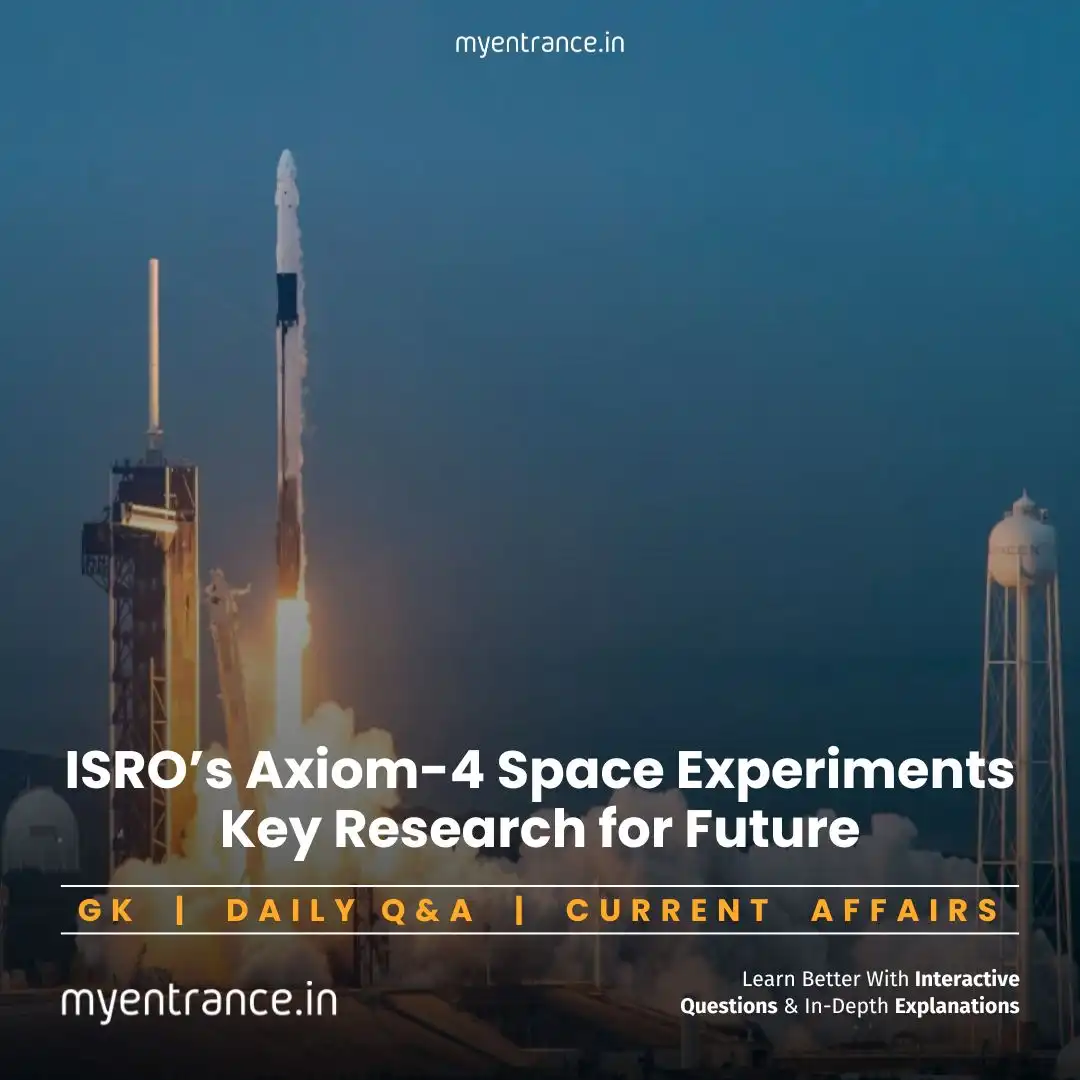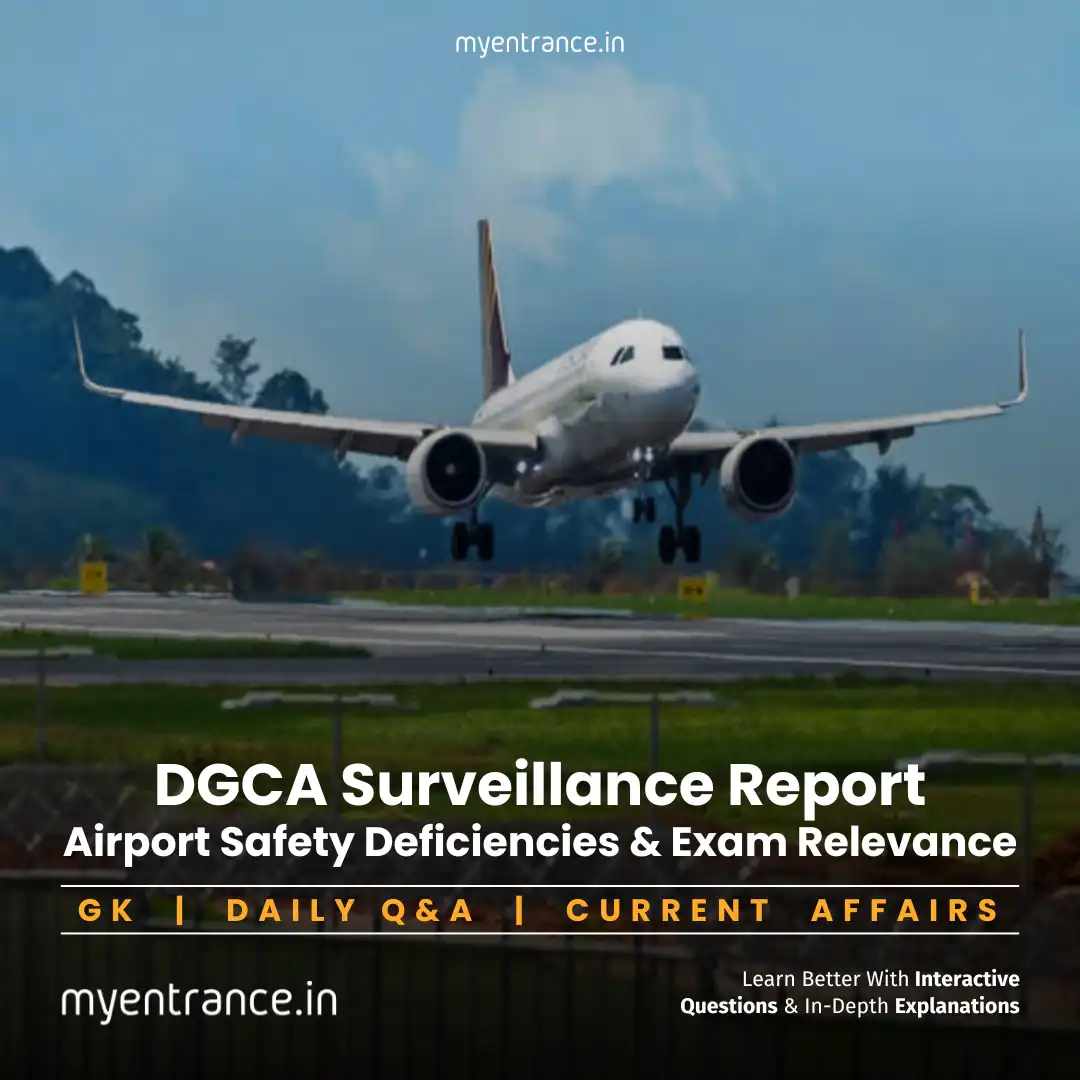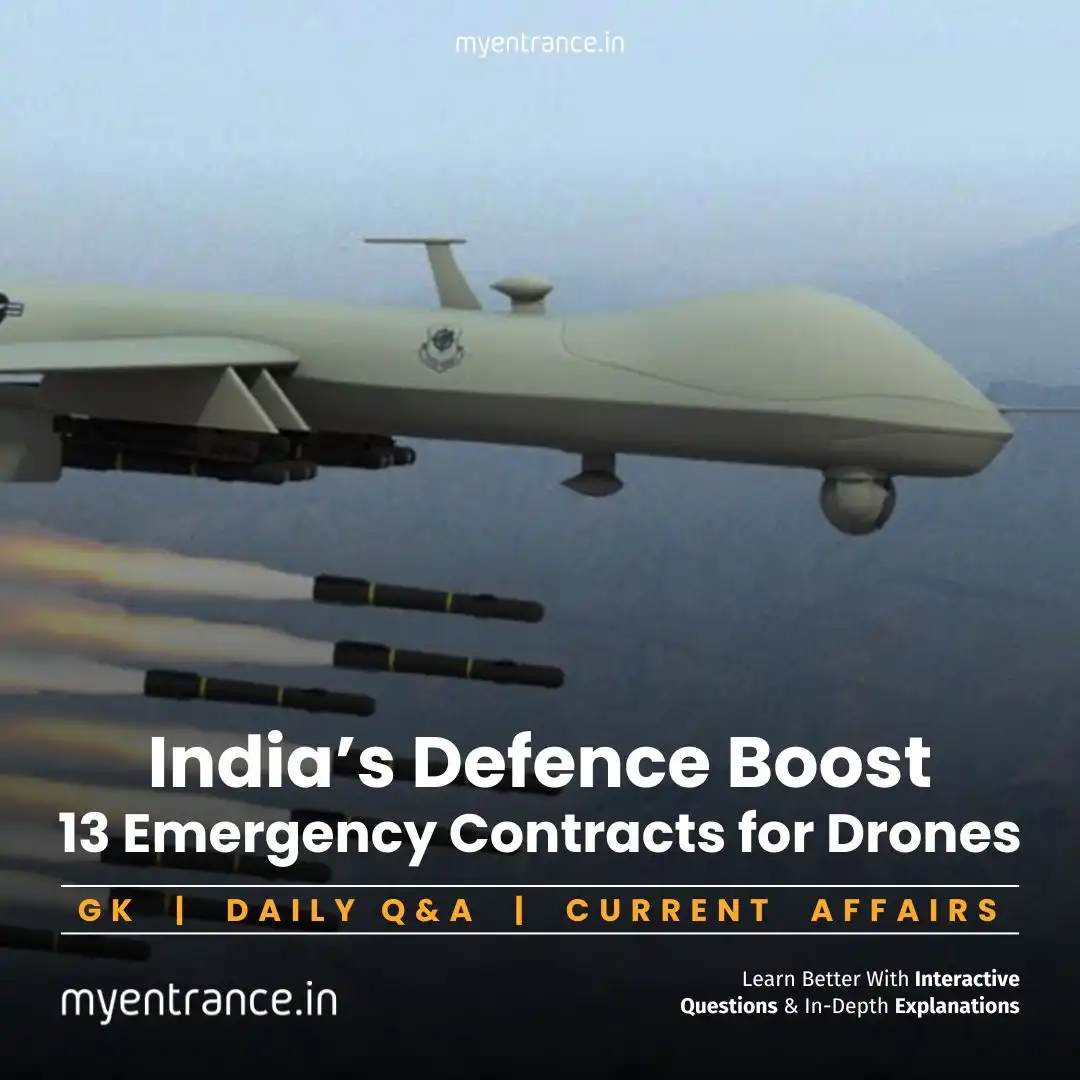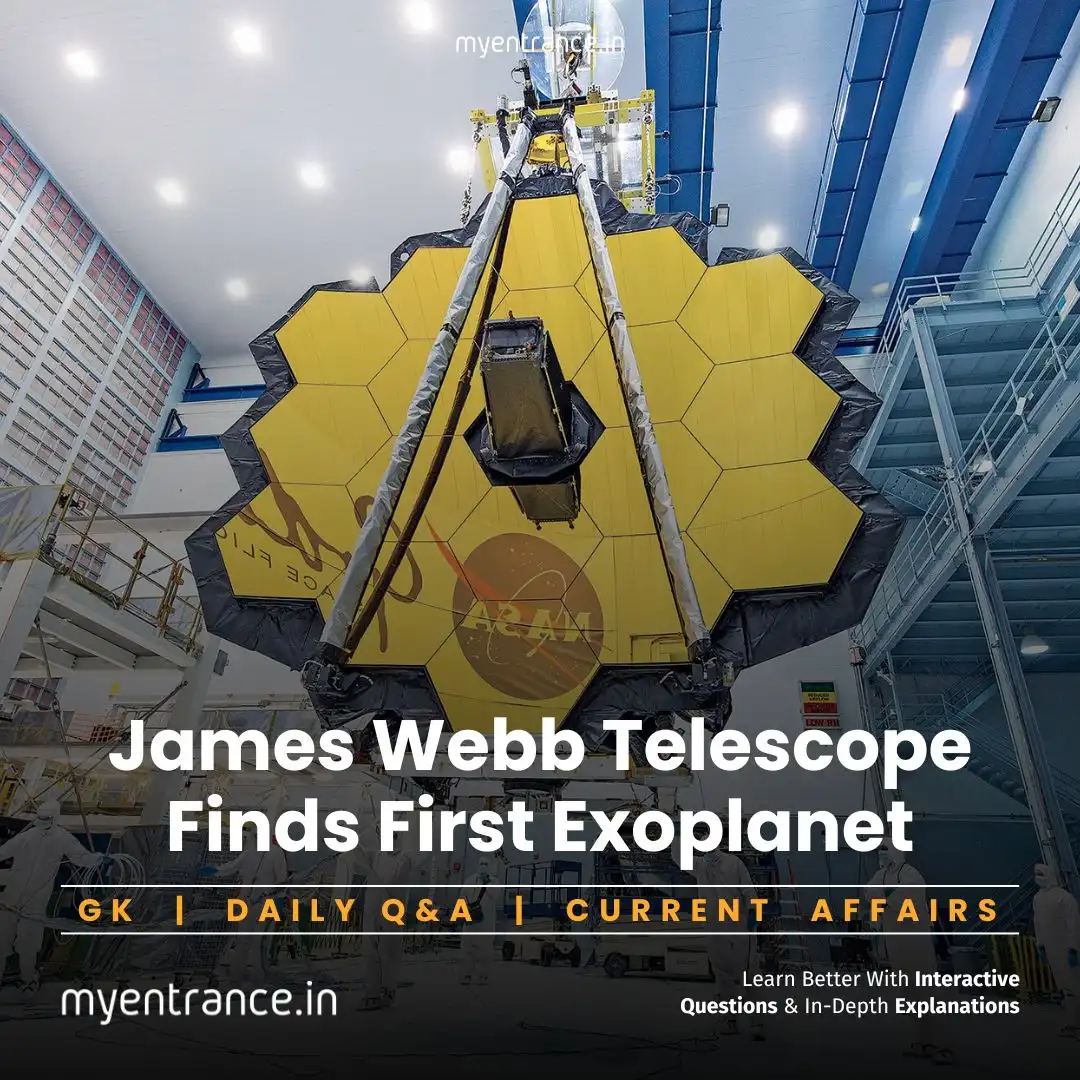Select Language
ISRO’s Axiom-4 Space Experiments: Key Research for Future Space Missions
The Indian Space Research Organisation (ISRO) is collaborating with NASA on the Axiom-4 mission, conducting multiple scientific experiments aboard the International Space Station (ISS). This mission includes over 60 research studies from 31 countries, making it one of the most extensive space research initiatives to date.

Relevance to Competitive Exams: Questions on ISRO, space missions, and scientific research frequently appear in SSC, PSC, NIFT, NID, and other government exams.
Scientific Awareness: Understanding space experiments helps in general knowledge and science sections.
Future Implications: Topics like microgravity effects on biology and sustainable space farming are emerging fields in science and technology.
For students preparing for SSC, PSC, NIFT, NID, and other competitive exams, understanding these experiments is crucial, as space technology and ISRO’s advancements are common topics in general awareness sections.nancial aid, ensuring no deserving student misses out.
ISRO’s Axiom-4 Space Experiments: Key Research for Future Missions
The Indian Space Research Organisation (ISRO) is collaborating with NASA on the Axiom-4 mission, conducting multiple scientific experiments aboard the International Space Station (ISS). This mission includes over 60 research studies from 31 countries, making it one of the most extensive space research initiatives to date.
For students preparing for SSC, PSC, NIFT, NID, and other competitive exams, understanding these experiments is crucial, as space technology and ISRO’s advancements are common topics in general awareness sections.
Key Experiments by ISRO in Axiom-4 Mission
1. Crop Seeds on ISS
Objective: Study the effects of microgravity on six types of crop seeds.
Process: Seeds will be grown over multiple generations post-mission, with genetic analysis to identify beneficial traits.
Significance: Helps develop sustainable farming techniques for future space missions.
2. Cyanobacteria Growth in Space
Objective: Analyze how cyanobacteria (photosynthetic bacteria) behave in microgravity.
Process: Two strains will be compared for growth rates and biochemical changes.
Significance: Could lead to better life-support systems for spacecraft.
3. Sprouts & Microalgae Research
Objective: Examine germination and nutritional changes in space-grown seeds and algae.
Process: Post-mission analysis will assess genetic and microbial impacts.
Significance: Vital for developing space-compatible food sources.
4. Myogenesis (Muscle Loss Study)
Objective: Investigate muscle degeneration in microgravity.
Process: Identifying molecular pathways to prevent muscle atrophy.
Significance: Benefits astronauts and helps in medical research for muscle-related diseases.
5. Tardigrades (Microscopic Organisms)
Objective: Test survival and reproduction of tardigrades in space.
Process: Comparing space-flown tardigrades with Earth-based samples.
Significance: Helps understand life’s resilience in extreme environments.
6. Voyager Displays (Human-Computer Interaction)
Objective: Study how astronauts interact with screens in microgravity.
Process: Analyzing eye movements and stress responses.
Significance: Improves spacecraft interface designs for future missions.
7. STEMonstrations (Educational Outreach)
Objective: Engage Indian students with STEAM (Science, Technology, Engineering, Arts, Math) activities.
Significance: Inspires future scientists and aligns with India’s Gaganyaan mission goals.
Connection to ISRO’s Gaganyaan Mission
The findings from Axiom-4 will support ISRO’s Gaganyaan mission, India’s first manned spaceflight planned for 2025. Understanding muscle loss, food sustainability, and human adaptation in space is critical for sending astronauts safely to Low Earth Orbit (LEO).
Sample Questions & Answers for Competitive Exams
Q1. What is the primary goal of ISRO’s crop seed experiment on the Axiom-4 mission?
A1: To study the effects of microgravity on seed germination and identify traits for future space farming.
Q2. How does the cyanobacteria experiment benefit space missions?
A2: It helps in developing life-support systems by analyzing bacterial growth in microgravity.
Q3. Why is the myogenesis experiment important for astronauts?
A3: It studies muscle loss in space, helping develop treatments for long-duration missions.
Q4. What are tardigrades, and why are they being studied in space?
A4: Tardigrades are microscopic organisms known for extreme survival; studying them helps understand life’s limits in space.
Q5. How does the Axiom-4 mission support India’s Gaganyaan project?
A5: It provides crucial data on human adaptation, food sustainability, and muscle health for future manned missions.
Most Predicted Questions
Comprehensive study materials, Expert-guided tips & tricks, Mock tests and instant results.
Start your SSC, NIFT, NID, FDDI, PSC journey today with MyEntrance, your ultimate online coaching platform.















